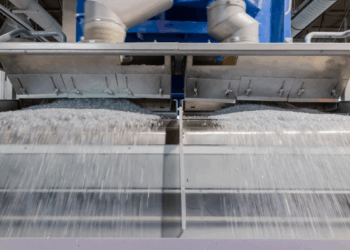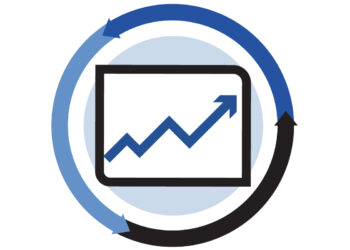J.J. Santos
In developed countries, the ceramics industry is one of the sectors with the highest investment in innovation aimed at limiting the environmental impacts of its activities. Those activities require both large consumption of raw materials (clays and feldspars, among others) and energy.
The ceramics sector is always looking to innovate to remain in compliance with strict laws and to protect the environment. That’s the case not only in the manufacturing process but throughout the supply chain, including the supply of raw materials, transportation, end products, final uses and more. In the search for this sustainability, the ceramics sector has found a solution in using recycled CRT glass as a secondary raw material.
Spain manufactured 4.7 million square feet of tile in 2015, more than any other European country. The use of CRT glass in ceramics is a reality there.
Life ClayGlass, a European project co-financed by the European Commission, is one of the most recent initiatives to prove the socioeconomic and environmental advantages of using properly handled CRT glass as a secondary raw material. This three-year project, which ended in December, was coordinated by the Spanish Asociación para la Investigación y Desarrollo Industrial de los Recursos Naturales (AITEMIN). The European Commission provided 988,611 euros (more than $1 million) out of the total 1.98 million euro project budget.
Five to 10 percent CRT material
Life ClayGlass tested mixing clays with recycled CRT glass, both leaded and unleaded. By using 5 to 10 percent recycled CRT glass in ceramic tiles, it is possible to reduce the required cooking temperatures and, consequently, reduce carbon dioxide emissions. The energy savings during the firing of ceramics can also range from 5 to 10 percent, depending on the percentage of recycled glass allowed by the ceramics mass.
The decrease in furnace temperatures ranges from 212 degrees Fahrenheit to 302 degrees Fahrenheit. In total, the savings of manufacturing costs could be around 7.5 percent. Additionally, testing in the furnace chimneys verified that the emissions remain as clean as before the glass was used and within European Pollutant Emission Register thresholds.
Other benefits are the reduced use of natural raw materials, such as clays and feldspars, during the ceramics manufacturing process. Using recycled CRT glass also keeps it out of landfills, where it presents risks to the environmental and nearby populations.
Besides Life ClayGlass, there are other serious projects supporting the use of recycled CRT glass in the ceramics industry. The Ecovitrum project was designated one of six “Best of the Best” Life Environment Projects 2013. The project’s main objective was to demonstrate the possibility of apply a new integrated management model and technology for CRTs that enables them to be used in new products, including ceramics.
The project showed that CRT glass can be optimally used in the ceramics components industry as a substitute for commonly used raw materials, because of its similar chemical composition. Doing so transforms a waste into an economically viable resource. It was initially possible to replace 15 to 25 percent of natural raw materials with CRT glass, resulting in reductions in the consumption of silica, barium and strontium oxides, in full compliance with the aims of the flagship initiative for a resource-efficient Europe. The project managed to reduce carbon dioxide emissions by two metric tons (based on the estimate that recycling a TV or monitor involves a reduction of 46 pounds of carbon dioxide because materials do not need to be manufactured).
Worker safety a priority
These innovations are carried out within the framework of regulations for each of the production phases: materials use, handling, installation and transportation of both raw materials and final products. Specifically, and in a more exhaustive way, they comply with regulation related to the safety of workers. For instance, in the case of leakage in glazed tiles that include CRT glass, it is demonstrated that lead stays inert and remains distributed throughout the whole ceramic dough.
Later, when the tiles are broken during a demolition or cut during installation, the lead in the dust does not present a risk to consumers or workers. That’s because only a tiny portion of the tile is lead. Hazards can come from breathing enormous amounts of dust, but not because of the tiny quantity of lead in the dust.
One of the advantages of a globalized world is the possibility of participating in the best-available technologies wherever they are located. That guarantees the profitability of the companies involved and the environmental benefits derived by the technologies. Moreover, rail and ship transportation are considered environmentally friendly modes of transportation because of their high energy efficiency and low carbon dioxide emissions, compared to emissions from truck transportation.
For all of these reasons, ceramic manufacturing should be considered a positive downstream option for CRT glass.
J.J.Santos is the international manager of waste electrical and electronic equipment at Camacho Recycling, located in Spain. He can be contacted at [email protected].





















